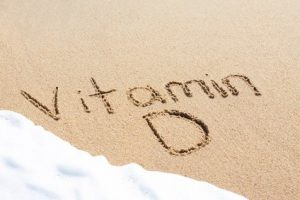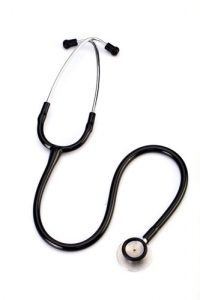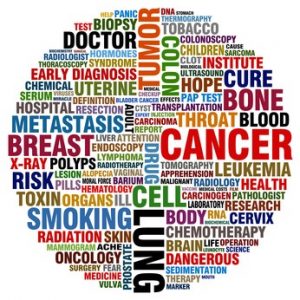Does Vitamin D Reduce Cancer Risk?
Author: Dr. Stephen Chaney
 The relationship between vitamin D and cancer risk is controversial. Some studies suggest that vitamin D reduces cancer risk. In those studies, the risk reduction was strongest for colon cancer, lung cancer, and breast cancer. However, other studies have found no association between vitamin D status and cancer risk.
The relationship between vitamin D and cancer risk is controversial. Some studies suggest that vitamin D reduces cancer risk. In those studies, the risk reduction was strongest for colon cancer, lung cancer, and breast cancer. However, other studies have found no association between vitamin D status and cancer risk.
Most previous studies have been conducted in European and American populations. Very few of the studies have been done in Asian populations. So, the authors of the current study (S. Budhathoki et al, BMJ 2018; 360:k671, doi: 10.1136/bmj.k671 ) focused their attention on the Japanese population.
How Was The Study Done?
 The data for this study were drawn from the much larger Japanese Public Health Center (JPHC) Study. THE JPHC Study is an ongoing study investigating the role of lifestyle and other factors on the risk of cancer and other diseases. The study began in 1990 and enrolled 140, 420 participants aged 40-59.
The data for this study were drawn from the much larger Japanese Public Health Center (JPHC) Study. THE JPHC Study is an ongoing study investigating the role of lifestyle and other factors on the risk of cancer and other diseases. The study began in 1990 and enrolled 140, 420 participants aged 40-59.
All participants in the JPHC study filled out a detailed food frequency questionnaire at the time of entry into the study. A subset of participants also donated blood upon entry into the study for determination of 25-hydroxyvitamin D levels (the most reliable measurement of vitamin D status). It is this subset of participants who formed the basis of the current study.
There were 33,736 participants in this study. Based on plasma 25-hydroxyvitamin D levels at entry into the study, the participants were divided into four groups of around 1000 participants.
- Group 1 had a median serum 25-hydroxyvitamin D level of 36.9 nmol/L.
- Group 2 had a median serum 25-hydroxyvitamin D level 48.4 nmol/L.
- Group 3 had a median serum 25-hydroxyvitamin D level of 56.9 nmol/L.
- Group 4 had a median serum 25-hydroxyvitamin D level of 72.6 nmol/L.
For reference, the NIH considers < 30 nmol/L to be deficient, 30 to < 50 nmol/L to be insufficient for bone and overall health, > 50 nmol/L to be sufficient, and > 150 nmol/L to be potentially associated with adverse effects. By these criteria, group 1 had insufficient serum levels of 25-hydroxyvitamin D, group 2 was borderline, and groups 3 and 4 had sufficient serum levels of 25-hydroxyvitamin D.
The participants were followed for a total of 19 years. During this time 3301 participants developed cancer. The cancer incidence in groups 2, 3 and 4 were compared to the cancer incidence in group 1 to determine the effect of vitamin D status on cancer risk.
Vitamin D and Cancer Risk
 The results of the Vitamin D and cancer risk study were:
The results of the Vitamin D and cancer risk study were:
- Vitamin D reduced total cancer risk by up to 25%.
- Vitamin D reduced the risk of liver cancer by up to 55%.
- Vitamin D reduced the risk of pre-menopausal breast cancer by up to 44%.
- There was a trend towards reduction of colon, liver, and prostate cancer by vitamin D, but the results did not quite reach significance.
- There were too few cases for most other cancers to assess whether vitamin D status had any effect.
- Risk reduction was not linear. Except for liver cancer, risk reduction for group 4 (72.6 nmol/L) was not greater than the risk reduction for group 3 (56.9 nmol/L). The significance of this observation will be discussed below.
The authors concluded: “Our findings support the hypothesis that vitamin D may confer protection against cancer. Nevertheless, the lower risk associated with higher circulating vitamin D concentrations seemed to show a ceiling effect, which may suggest that although maintaining an optimal 25-hydroxyvitamin D concentration is important for prevention of cancer, having a concentration beyond this optimal level may provide no further benefit.”
Why Is The Association of Vitamin D And Cancer Risk So Confusing?
 So why do some studies demonstrate confusing data on Vitamin D and cancer risk? The “ceiling effect” mentioned by the authors of this study may explain much of the variation in results from previous trials. As I say in my upcoming book, “Slaying The Supplement Myths” , supplementation is most likely to be effective when the subjects are deficient in that nutrient at the beginning of the study. If they are starting with adequate levels of the nutrient, supplementation is unlikely to provide additional benefit.
So why do some studies demonstrate confusing data on Vitamin D and cancer risk? The “ceiling effect” mentioned by the authors of this study may explain much of the variation in results from previous trials. As I say in my upcoming book, “Slaying The Supplement Myths” , supplementation is most likely to be effective when the subjects are deficient in that nutrient at the beginning of the study. If they are starting with adequate levels of the nutrient, supplementation is unlikely to provide additional benefit.
While that statement seems to be obvious, many previous studies have ignored the beginning nutritional status. Some have not measured 25-hydroxyvitamin D levels at the beginning of the study. Others have measured starting 25-hydroxyvitamin levels but have not considered the starting levels in interpretation of their data.
Group 1 in the current study clearly had inadequate 25-hydroxyvitamin D levels. That may be why the groups with sufficient 25-hydroxyvitamin D levels showed a reduction in risk. The low baseline 25-hydroxyvitamin D is logical because most of Japan lies north of the United States, so sun exposure is less. In addition, the authors stated that food fortification and supplementation with vitamin D is much less in Japan than the US. In contrast, the baseline 25-hydroxyvitamin D status in many US studies is significantly higher.
The authors did a thorough analysis of previous studies. In general, studies with a low baseline level of 25-hydroxyvitamin D showed a reduction in cancer risk by vitamin D. Studies with a higher baseline level of 25-hydroxyvitamin D showed no effect.
This analysis does not permit a definitive conclusion, but it clearly defines how future studies should be designed. Simply put, to reliably test whether vitamin D reduces cancer risk, the experiment must be designed in such a way that the baseline 25-hydroxyvitamin D level is in the inadequate range. Otherwise, there is no reason to expect that higher levels of 25-hydroxyvitamin D will confer any benefit.
The Bottom Line:
A recent study looked at the effect of vitamin D status (serum 25-hydroxyvitaminD levels) on cancer risk. The study reported:
- Vitamin D reduced total cancer risk by up to 25%.
- Vitamin D reduced the risk of liver cancer by up to 55%.
- Vitamin D reduced the risk of pre-menopausal breast cancer by up to 44%.
- There was a trend towards reduction of colon, liver, and prostate cancer by vitamin D, but the results did not quite reach significance.
- There were too few cases for most other cancers to assess whether vitamin D status had any effect.
- Risk reduction was not linear. Except for liver cancer, risk reduction for group 4 (72.6 nmol/L) was not greater than the risk reduction for group 3 (56.9 nmol/L).
The authors concluded: “Our findings support the hypothesis that vitamin D may confer protection against cancer. Nevertheless, the lower risk associated with higher circulating vitamin D concentrations seemed to show a ceiling effect, which may suggest that although maintaining an optimal 25-hydroxyvitamin D concentration is important for prevention of cancer, having a concentration beyond this optimal level may provide no further benefit.”
The “ceiling effect” mentioned by the authors of this study may explain much of the variation in results from previous trials.
For more details, read the article above:
These statements have not been evaluated by the Food and Drug Administration. This information is not intended to diagnose, treat, cure or prevent any disease.
